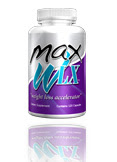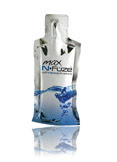It's the needles that everyone knows about acupuncture. And it's those needles that prevent most people from looking any further into using acupuncture. Acupuncture works by inserting these fine, metal needles into acupuncture points to manipulate the flow of "qi" or energy through the body. The acupuncture points are numbered from 1 to 41 for the large points, and 1 through 33 for the small points. These points are a major part of the course of study of licensed acupuncturists.
In all, there are over 360 acupuncture points which can be used for stimulation. When fine needles are inserted into these points, the flow of energy through those points can be either interrupted or strengthened. By directing this energy, many health problems can be healed or improved. Tender acupuncture points may indicate area of abnormal energy flow.
Because of their fear of needles, many people are afraid to try acupuncture. Luckily, the insertion of these hair-thin needles along acupuncture points is most often painless. And during the few times when discomfort is experienced, the sensation is akin to a mosquito bite and is far less painful than receiving an injection or donating blood.
Western science is still attempting to identify meridians using Western tools. The difficulty for Western scientists in this task lies in the fact that the meridians don't directly correspond to nerve or blood pathways. Some researchers have hypothesized that the meridians are actually located throughout the body's connective tissue.
However, Western scientists have gathered data suggesting acupuncture points are strategic conductors of electromagnetic signals. The Gate Theory supposes that pain signals must pass through high traffic "gates" as they move from an area of pain or injury through the spinal cord and to the brain. Like streets or freeways, there is a limited to the amount of traffic or signals that these gates can carry.
To continue with the streets and alleys metaphor, some signals are given a higher clearance than normal signals such as pain. These higher priority/clearance are like emergency vehicles - ambulances, police cars, fire trucks - which supersede the slower, lower priority signals in their quest to reach the brain. These super signals may even bump the slower signals off the road altogether, preventing them from ever reaching the brain. Acupuncture may generate these priority signals, which crowd out pain signals because of the limited throughput of the nerves. The acupuncture signals may not only diminish the speed and severity of the pain signals, they may actually prevent them from being received by the brain at all. Acupuncture may also trigger the release of chemicals and hormones which reduce pain, and they may also alert the immune system to pay special attention to certain part of the body's roads.
Studies have also found that the stimulation of acupuncture points not only attenuates pain but also affects directly the body's circulation, blood pressure, cell production in blood, and immune system function. The points also stimulate the brain and spinal cord to release chemicals into the rest of the body which alter brain chemistry in a beneficial way.
Acupuncture is still in many ways a mystery to Western medicine. That by no means, however, diminishes its efficacy. Whether acupuncture works by balancing the complementary forces of yin and yang in the body or by manipulating the electrical signals of the nerves, we don't have a definite answer yet. We do know, however that acupuncture works wonders on many modern ailments, and that it is, in many cases, at least as effective as Western modalities in eradicating pain, promoting health, and restoring well-being.
In all, there are over 360 acupuncture points which can be used for stimulation. When fine needles are inserted into these points, the flow of energy through those points can be either interrupted or strengthened. By directing this energy, many health problems can be healed or improved. Tender acupuncture points may indicate area of abnormal energy flow.
Because of their fear of needles, many people are afraid to try acupuncture. Luckily, the insertion of these hair-thin needles along acupuncture points is most often painless. And during the few times when discomfort is experienced, the sensation is akin to a mosquito bite and is far less painful than receiving an injection or donating blood.
Western science is still attempting to identify meridians using Western tools. The difficulty for Western scientists in this task lies in the fact that the meridians don't directly correspond to nerve or blood pathways. Some researchers have hypothesized that the meridians are actually located throughout the body's connective tissue.
However, Western scientists have gathered data suggesting acupuncture points are strategic conductors of electromagnetic signals. The Gate Theory supposes that pain signals must pass through high traffic "gates" as they move from an area of pain or injury through the spinal cord and to the brain. Like streets or freeways, there is a limited to the amount of traffic or signals that these gates can carry.
To continue with the streets and alleys metaphor, some signals are given a higher clearance than normal signals such as pain. These higher priority/clearance are like emergency vehicles - ambulances, police cars, fire trucks - which supersede the slower, lower priority signals in their quest to reach the brain. These super signals may even bump the slower signals off the road altogether, preventing them from ever reaching the brain. Acupuncture may generate these priority signals, which crowd out pain signals because of the limited throughput of the nerves. The acupuncture signals may not only diminish the speed and severity of the pain signals, they may actually prevent them from being received by the brain at all. Acupuncture may also trigger the release of chemicals and hormones which reduce pain, and they may also alert the immune system to pay special attention to certain part of the body's roads.
Studies have also found that the stimulation of acupuncture points not only attenuates pain but also affects directly the body's circulation, blood pressure, cell production in blood, and immune system function. The points also stimulate the brain and spinal cord to release chemicals into the rest of the body which alter brain chemistry in a beneficial way.
Acupuncture is still in many ways a mystery to Western medicine. That by no means, however, diminishes its efficacy. Whether acupuncture works by balancing the complementary forces of yin and yang in the body or by manipulating the electrical signals of the nerves, we don't have a definite answer yet. We do know, however that acupuncture works wonders on many modern ailments, and that it is, in many cases, at least as effective as Western modalities in eradicating pain, promoting health, and restoring well-being.
About the Author:
Do you need help in relieving pain, quitting smoking, or treating infertility? Evolve Wellness is a Los Angeles Acupuncture Center that has been helping hundreds of patients overcome a variety of medical challenges since 1998. Call or schedule an appointment with one of our Los Angeles Acupuncturists today.







No comments:
Post a Comment